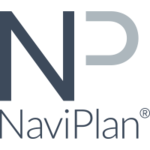Description

Axys

NaviPlan
Comprehensive Overview: Axys vs NaviPlan
Axys and NaviPlan are both financial planning tools used predominantly by financial advisors, but they serve slightly different purposes and target markets. Here's a comprehensive overview:
a) Primary Functions and Target Markets
Axys:
-
Primary Functions:
- Axys is mainly a portfolio management and performance reporting system. It focuses on allowing financial advisors to track investment portfolios, analyze performance, and generate detailed reports.
- It includes features for portfolio accounting, client billing, historical and hypothetical performance tracking, and asset allocation analysis.
-
Target Markets:
- Axys targets financial advisors, investment managers, and financial institutions that prioritize robust portfolio management and performance analytics.
- The tool is often used by small to mid-sized firms that require detailed performance reporting capabilities.
NaviPlan:
-
Primary Functions:
- NaviPlan is a comprehensive financial planning software that focuses on delivering in-depth financial plans and analyses.
- It offers goal-based and cash-flow-based financial planning, retirement projections, estate planning, tax analysis, and scenario modeling.
-
Target Markets:
- NaviPlan targets financial advisors and planners who need a powerful tool to create detailed financial plans for clients.
- Its detailed planning capabilities make it suitable for advisors dealing with complex client financial situations.
b) Market Share and User Base
-
Axys:
- Axys is considered a traditional and established product in the portfolio management space. It has a steady user base, particularly among firms that value its comprehensive reporting features.
- Its market share is stable but has gradually been impacted by newer, cloud-based platforms that offer modern interfaces and advanced integration capabilities.
-
NaviPlan:
- NaviPlan is one of the leading financial planning software programs and has a significant presence in the financial advisory market.
- It enjoys a broad user base among individual financial advisors and wealth management firms, partly due to its strong reputation and comprehensive planning features.
c) Key Differentiating Factors
-
Focus and Specialization:
- Axys is specialized in portfolio management and performance reporting. It excels in tracking investments and delivering detailed performance metrics and reports.
- NaviPlan focuses on financial planning, offering in-depth solutions for retirement, estate, tax, and cash-flow planning.
-
User Experience and Interface:
- Axys has a traditional interface that may seem outdated compared to modern SaaS-based solutions. It is preferred by users who prioritize functionality over aesthetics.
- NaviPlan offers a more modern interface with intuitive design and user-friendly navigation, appealing to financial advisors who require both functionality and ease of use.
-
Integration and Flexibility:
- Axys has integration capabilities but is known for its compatibility with other portfolio management tools rather than focusing on comprehensive financial ecosystems.
- NaviPlan provides robust integration options with a wide array of financial products, CRMs, and tools, making it highly flexible for diverse financial advisory ecosystems.
-
Deployment and Accessibility:
- Axys is traditionally deployed as on-premises software, though some versions may include web-based access.
- NaviPlan is available as both a desktop and a cloud-based solution, making it more accessible for users needing remote access.
In summary, Axys and NaviPlan cater to different aspects of financial advisory services, with Axys emphasizing portfolio management and NaviPlan focusing on comprehensive financial planning. Their differences in user interface, integration capabilities, and market focus make them suitable for different types of financial advisory practices.
Contact Info

Year founded :
1992
+1 888-373-0881
Not Available
Mauritius
Not Available

Year founded :
Not Available
Not Available
Not Available
Not Available
Not Available
Feature Similarity Breakdown: Axys, NaviPlan
Axys and NaviPlan are both financial planning software solutions that offer a variety of features designed to assist financial advisors in managing clients’ portfolios and planning their financial futures. Here is a breakdown of their features based on commonalities, user interface, and unique attributes:
a) Core Features in Common
-
Portfolio Management: Both Axys and NaviPlan provide comprehensive tools for managing investment portfolios, allowing advisors to track asset allocation, performance metrics, and rebalancing.
-
Financial Planning: They offer robust financial planning capabilities, including retirement planning, cash flow analysis, and goal-based planning.
-
Reporting Tools: Each software provides customizable reporting options, helping advisors generate detailed reports for clients.
-
Integration Capabilities: Both platforms can integrate with various third-party applications and data providers to enhance their functionalities, such as CRM systems and custodial data import.
-
Compliance Tools: They include features to help maintain compliance with industry regulations, such as audit trails and documentation features.
b) User Interface Comparison
-
Axys: The user interface of Axys is often considered traditional, focusing on functionality and efficiency. While it provides a comprehensive suite of features, the interface may appear dated compared to more modern applications. Users might note a steeper learning curve but appreciate the depth of functionality once they become accustomed to the layout.
-
NaviPlan: NaviPlan's user interface is typically more modern and user-friendly. It often emphasizes ease of use and visual appeal, which can be beneficial for advisors who prefer a more intuitive navigation experience. The use of dashboards and visual guides for planning scenarios makes it accessible even for users with less technical expertise.
c) Unique Features
-
Axys:
- Custom Scripting: Axys users often benefit from a high degree of customization through scripting, allowing for tailored solutions that can adjust to specific client needs.
- Historical Data Analysis: The software has strong capabilities for in-depth historical analysis, which can be crucial for advisors focusing on long-term investment trends.
-
NaviPlan:
- Real-Time Collaboration: NaviPlan offers enhanced collaborative features, allowing advisors and clients to work together on financial plans in real-time.
- Scenario Planning: It excels in scenario-based planning, offering dynamic tools to simulate various financial scenarios and outcomes with ease, which can be particularly useful for visualizing potential future events and their impacts.
Each software has its strengths, with Axys appealing to those who need highly customizable solutions and robust analytical capabilities, while NaviPlan attracts users looking for intuitive design and advanced scenario planning tools. Financial advisors should assess their specific needs and client interactions to choose the software that best fits their practice.
Features

Not Available

Not Available
Best Fit Use Cases: Axys, NaviPlan
Axys and NaviPlan are software solutions tailored to different aspects of financial services, each catering to specific needs within the industry. Here's a detailed look at the best fit use cases for each:
Axys
Axys is a portfolio management software primarily used for investment management. It is well-suited for:
a) Types of businesses or projects:
-
Investment Management Firms: Axys is particularly strong for firms that require robust portfolio management capabilities, including performance measurement, client reporting, and portfolio accounting. It is ideal for small to mid-sized investment firms that need detailed insights into portfolio performance.
-
Wealth Management and Advisory Services: Businesses offering wealth management services can leverage Axys for its comprehensive functionality in tracking investments, calculating returns, and producing detailed client reports.
-
Family Offices: These private firms managing investments and trusts for high-net-worth families can benefit from Axys's ability to handle multiple types of assets and transactions.
NaviPlan
NaviPlan is a financial planning software focused on providing in-depth financial planning and analysis. It serves:
b) Scenarios where NaviPlan is preferred:
-
Financial Advisors and Planners: NaviPlan is best used by financial advisors who need to create detailed, goal-based financial plans for clients. Its strengths lie in its ability to model complex financial scenarios, retirement planning, and estate planning.
-
Retirement Planning Specialists: For businesses specializing in helping clients plan for retirement, NaviPlan offers tools to simulate various retirement scenarios, analyze retirement income sustainability, and create tailored strategies.
-
Insurance Advisors: Those involved in life insurance and strategies for risk management can use NaviPlan to demonstrate the impact of different insurance products on a client’s overall financial health.
Industry Verticals and Company Sizes
d) How these products cater to different industry verticals or company sizes:
-
Axys: It's versatile in servicing various segments of the financial services industry. While it’s more popular among smaller to mid-sized firms due to its ease of use and comprehensive feature set, it can also serve larger firms that do not require the additional complexity of enterprise systems. Verticals that benefit from Axys include asset management, brokerage firms, and family offices.
-
NaviPlan: Typically caters to financial advisory and planning firms, regardless of size. It is scalable and can be used by independent financial advisors to large advisory firms. The software's flexibility allows it to adapt to various industry verticals, including banking, insurance, and wealth management. Smaller advisory practices benefit from its user-friendly interface and precise planning capabilities, while larger firms utilize its robust scenario analysis and reporting features.
In summary, Axys is best for investment management with a focus on portfolio tracking and performance, while NaviPlan excels in financial planning and analysis, suitable for detailed financial advisory roles. Both adapt well to different industry needs but target slightly different verticals and company sizes.
Pricing

Pricing Not Available

Pricing Not Available
Metrics History
Metrics History
Comparing undefined across companies
Conclusion & Final Verdict: Axys vs NaviPlan
Providing a conclusion and verdict for Axys and NaviPlan requires consideration of their features, usability, pricing, customer support, and specific needs of the users they cater to. Here's a structured breakdown, taking into account these aspects:
a) Best Overall Value
NaviPlan appears to offer the best overall value, primarily due to its comprehensive financial planning capabilities, adaptability to different planning scenarios, and robust client engagement tools. It tends to be favored by financial advisors who need detailed analysis and scenario planning, which is crucial for complex financial situations.
b) Pros and Cons
Axys
Pros:
- Portfolio Management: Axys is well-known for its strong portfolio management features, catering to financial advisors who prioritize investment management.
- Customization: Offers substantial customization options, allowing firms to tailor reports and data analysis to their specific needs.
- Integration: Compatible with a variety of third-party applications, enhancing its functionality.
Cons:
- Interface: The user interface can feel outdated and less intuitive compared to more modern software solutions.
- Learning Curve: New users might face a steep learning curve, requiring time to fully utilize its features.
- Focus: Primarily focused on portfolio management, which might not meet the broader needs of comprehensive financial planning.
NaviPlan
Pros:
- Comprehensive Financial Planning: Excels in detailed, goal-based financial planning and can handle complex planning scenarios effectively.
- User-Friendly Interface: Offers a more modern, intuitive interface that's easier for users to navigate.
- Client Engagement: Provides tools and resources that enhance client interaction and planning transparency.
Cons:
- Cost: Can be more expensive, especially for smaller firms or individual advisors with limited budgets.
- Portfolio Management: While strong in financial planning, it may not match Axys in pure portfolio management capabilities.
c) Recommendations for Users Deciding Between Axys and NaviPlan
-
Evaluate Needs: Users should assess their specific needs. If the primary requirement is robust portfolio management with a focus on investments, Axys might be more beneficial. Conversely, if comprehensive, in-depth financial planning is the priority, NaviPlan would likely be more suitable.
-
Consider Budget: Examine the budget constraints. NaviPlan's higher cost can be justified if the firm frequently handles complex financial scenarios that require detailed planning. Otherwise, Axys offers strong value in investment management at potentially lower costs.
-
User Experience and Training: Consider the time and resources available for training staff. If the preference is for an intuitive interface with minimal training requirements, NaviPlan might be the better choice. If there's an in-house capability for training and a focus on investment management, the learning curve of Axys might not be a significant deterrent.
-
Future Growth: Consider future business growth and services. Firms looking to expand into more comprehensive financial services may find NaviPlan's versatility and advanced planning tools more aligned with growth strategies.
In conclusion, choosing between Axys and NaviPlan should be guided by the specific needs and priorities of the user. NaviPlan stands out for its comprehensive financial planning capabilities and ease of use, while Axys remains a strong contender for investment-focused portfolio management with significant customization options.



